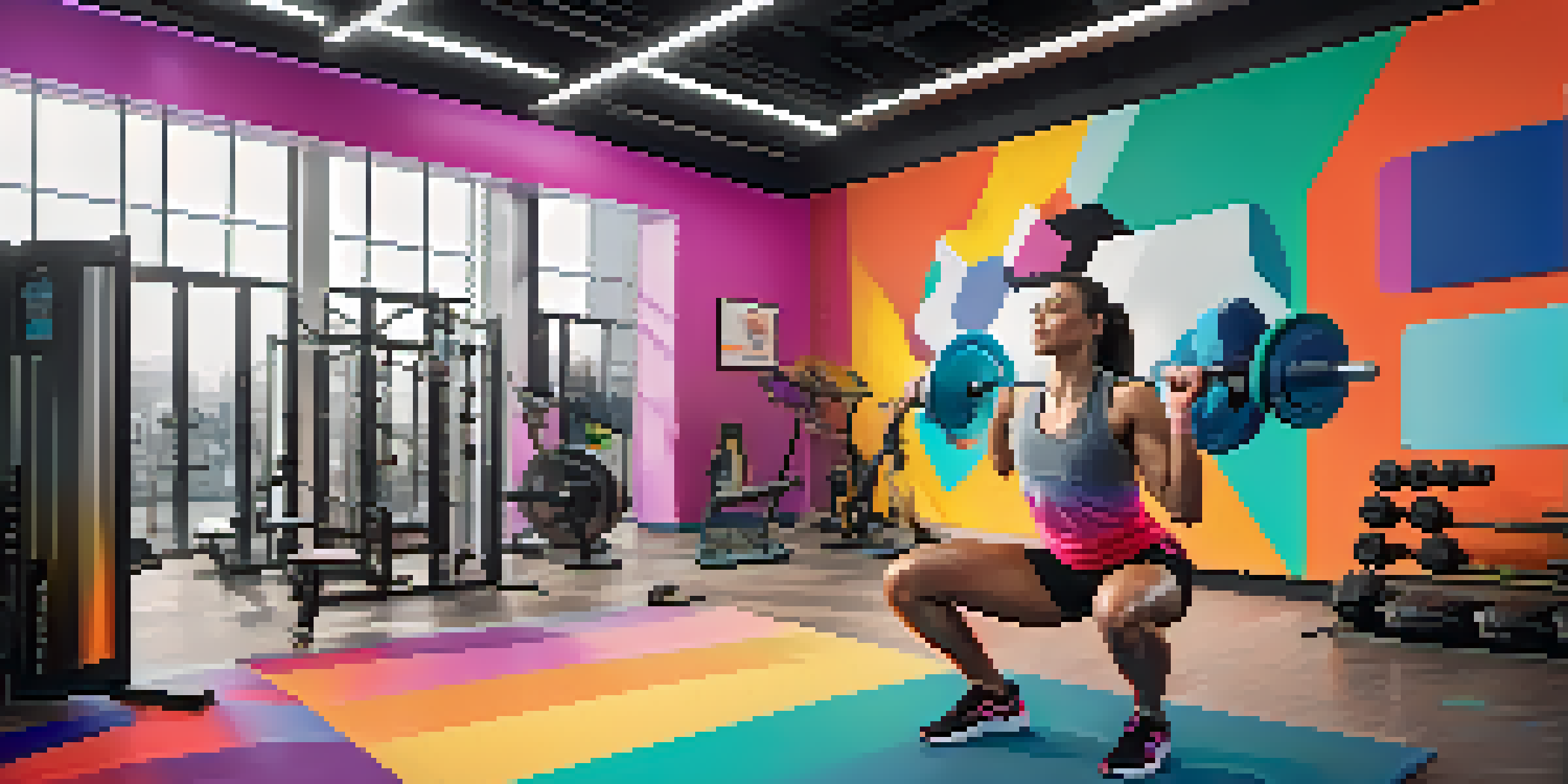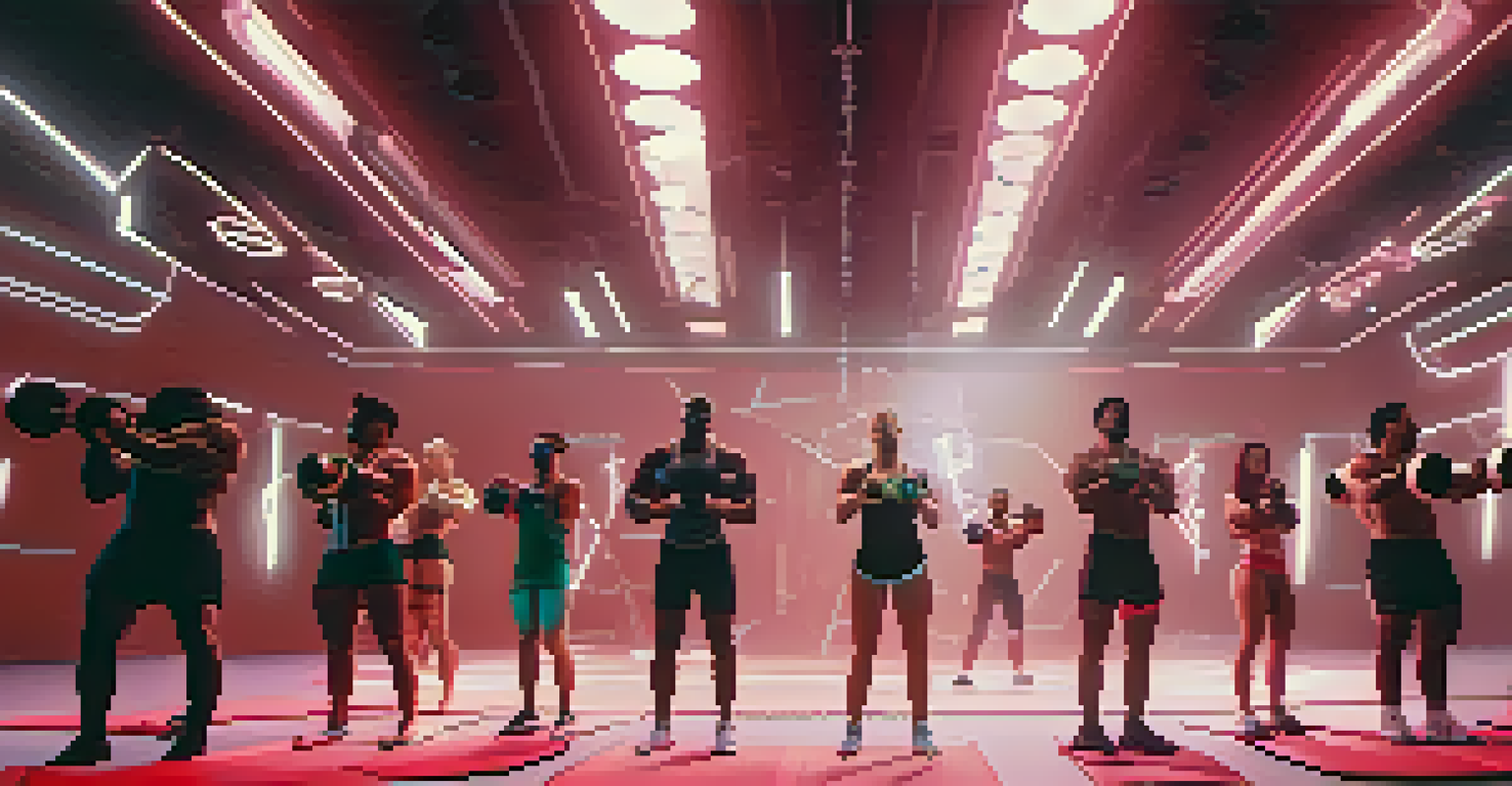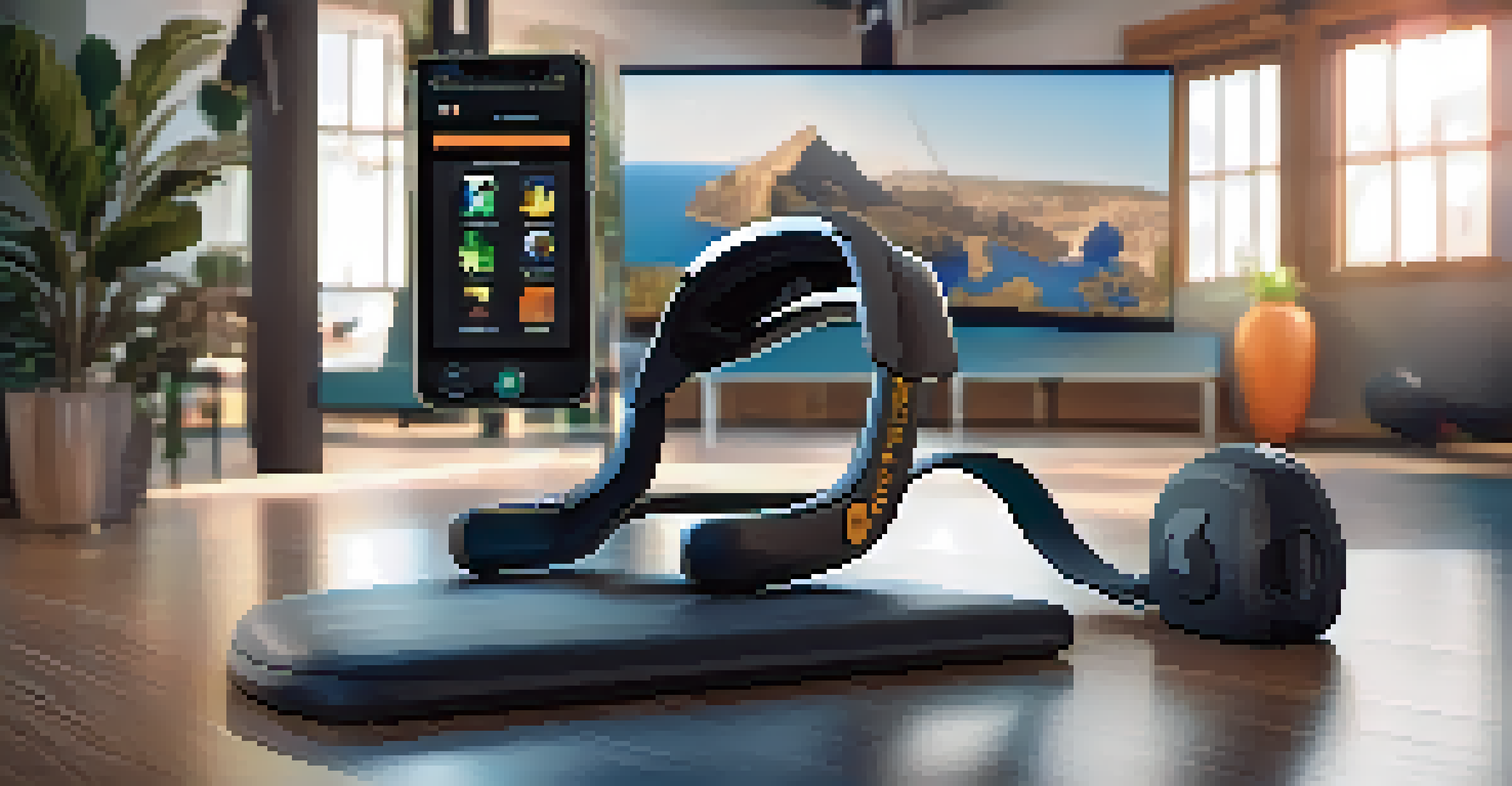The Rise of Virtual Reality in Bodybuilding Training

Understanding Virtual Reality in Fitness Training
Virtual reality (VR) is changing the way we approach fitness training, including bodybuilding. By immersing users in a 3D environment, VR provides a unique experience that traditional workouts cannot match. Imagine lifting weights while surrounded by a virtual gym filled with motivational visuals and sounds that energize your workout.
Virtual reality is the first step in a world where we can create anything we want. It's a tool that can change your life, and help you achieve your fitness goals.
This technology allows users to engage in interactive training sessions, making workouts more enjoyable and less monotonous. With VR, you can experience a virtual bodybuilding coach guiding you through exercises, offering tips, and correcting your form in real time. It’s like having a personal trainer who’s always there, regardless of your location.
As VR technology continues to advance, it’s becoming increasingly accessible. Fitness enthusiasts can now enjoy a variety of VR workout programs tailored specifically for bodybuilding, allowing them to build strength and muscle in a fun, engaging way.
Benefits of Using VR in Bodybuilding Training
Incorporating VR into bodybuilding training offers several advantages that can enhance your fitness journey. For starters, the immersive nature of VR increases motivation and engagement, making it easier to stick to your workout routine. When you're in a captivating virtual world, the time spent exercising tends to fly by, keeping boredom at bay.

Moreover, VR can help with personalized training. Many VR fitness programs adapt to your skill level and progress, ensuring that you're always challenged. This level of customization can lead to more effective workouts and faster results, helping you reach your bodybuilding goals.
VR Enhances Bodybuilding Experience
Virtual reality immerses users in engaging environments, making workouts more enjoyable and motivating.
Additionally, VR training can reduce the risk of injury. By using virtual simulations, users can learn proper techniques and form before trying exercises with real weights. This practice not only builds confidence but also helps prevent common injuries associated with improper lifting.
Real-World Applications of VR in Bodybuilding
Several fitness companies and gyms are already integrating VR technology into their programs. For instance, VR bodybuilding classes are popping up, where participants can engage in guided sessions that simulate real-life bodybuilders’ workouts. This interactive approach makes each session unique and exciting.
Fitness is not about being better than someone else. It's about being better than you used to be. VR can help bridge that gap by making workouts more engaging.
Moreover, VR headsets can be used for remote training, allowing users to connect with trainers or workout partners regardless of distance. Picture joining a VR bodybuilding class with friends from around the world, pushing each other to achieve those fitness goals together. It creates a sense of community that traditional workouts sometimes lack.
These applications are not just limited to gyms; home fitness is also benefiting from VR. Various VR fitness apps allow users to set up their own bodybuilding routines in the comfort of their living rooms. This flexibility makes it easier for people to incorporate strength training into their busy lives.
Challenges of Implementing VR in Bodybuilding
Despite its many benefits, the integration of VR in bodybuilding training does come with challenges. One significant hurdle is the cost of the technology. High-quality VR headsets and equipment can be expensive, which may deter some fitness enthusiasts from fully embracing it.
Another challenge is the adaptation period. Users may initially feel disoriented or uncomfortable while using VR, which could hinder their workout experience. It’s essential for users to gradually acclimate to the technology, ensuring they feel confident and secure during their sessions.
Personalized Training with VR
VR fitness programs offer customized workouts that adapt to individual skill levels, promoting effective training.
Lastly, while VR can enhance workouts, it cannot entirely replace the benefits of real-world training. Building muscle and strength requires physical resistance that VR cannot provide on its own. Therefore, many fitness experts suggest a hybrid approach, combining VR workouts with traditional bodybuilding techniques for optimal results.
The Future of VR in Bodybuilding Training
Looking ahead, the future of VR in bodybuilding training appears quite promising. As technology continues to evolve, we can expect even more sophisticated VR experiences that provide personalized coaching, tailored workouts, and real-time feedback. These advancements will likely make VR an essential tool in the fitness industry.
Moreover, fitness communities are beginning to explore the potential for competition through VR. Imagine virtual bodybuilding competitions where participants can showcase their skills and strength in a shared digital space. This could revolutionize the way we view bodybuilding events and competitions.
The growing interest in VR fitness also suggests that more developers will create innovative applications specifically designed for bodybuilding. As the market expands, users will have an array of options to choose from, allowing them to find the perfect fit for their goals and preferences.
User Experiences: Testimonials and Feedback
Many users who have tried VR for bodybuilding training report overwhelmingly positive experiences. For example, one user shared that VR workouts made him excited to hit the gym, transforming his approach to fitness. The immersive nature of the sessions kept him engaged, resulting in more consistent workouts.
Others have noted significant improvements in their performance and strength training. By receiving instant feedback on their form and technique through VR, they could make necessary adjustments and avoid bad habits. This real-time coaching aspect is something many users found invaluable.
Community and Connection in VR
VR allows users to connect with others remotely, fostering a sense of community that enhances motivation in bodybuilding.
Additionally, users appreciate the social aspect of VR fitness. Connecting with friends and fellow fitness enthusiasts in a virtual space adds an extra layer of motivation. This sense of camaraderie can make a significant difference in staying committed to bodybuilding goals.
Tips for Getting Started with VR Bodybuilding Training
If you're considering diving into VR bodybuilding training, there are a few tips to keep in mind. First, start with a comfortable and user-friendly VR headset that fits your budget and needs. It's essential to choose a system that provides a wide range of fitness applications tailored for bodybuilding.
Next, take your time to explore different VR workouts and find what resonates with you. There’s no one-size-fits-all approach, so trying various programs can help you discover the best fit for your training style and goals. Don't hesitate to mix and match workouts to keep things fresh and exciting.

Lastly, remember to listen to your body. As with any new workout routine, give yourself time to adjust and adapt to the VR environment. Stay mindful of your limits, and gradually increase the intensity of your workouts to ensure a safe and effective bodybuilding journey.